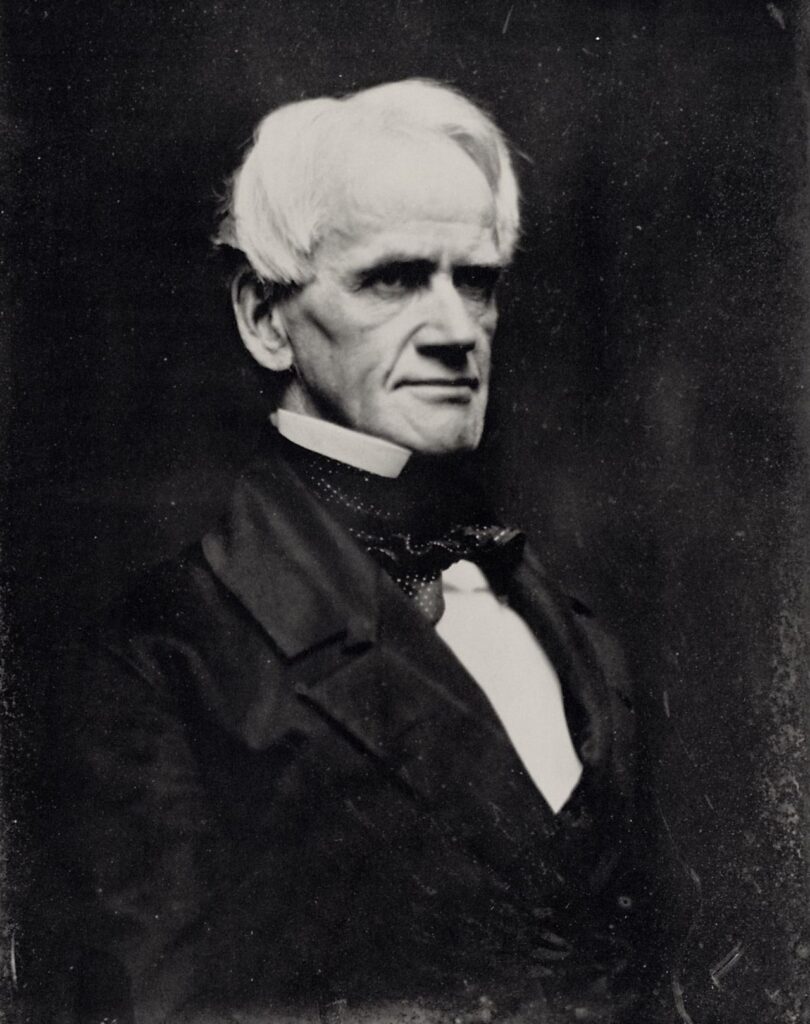Horace Mann – a brief reflection

Image of Horace Mann, by Southworth & Hawes – ImageZeno.org, ID number 20001902687, Public Domain, https://commons.wikimedia.org/w/index.php?curid=100101279
Written in August, 2023 for a course named: D-166, Foundations of Education, the following is a discussion of an individual who is known to Seattle residents and more, by name, but perhaps, not by actions. My goal was to share his story in brief. Below is that accounting.
An historical influence that is apparent in each of the classrooms would be the influence of Horace Mann’s “Common School” movement, from which our nation has a tendency to imagine that all students are within the realm of responsibility for the government to educate (point 3, below). Obviously, this movement needed time to grow. Its beginning was during the social crime of slavery, so of course, people of African heritage weren’t included with the initial stages, and many other groups were automatically excluded as well, such as Native folk. However, the paradigm began and has been expanded exponentially through the era of Civil Rights, both for people of diverse heritage and abilities.
Mann’s main principles having to do with public education have been considered revolutionary and controversial, and yet today seem common sense. They are as follows:
“(1) citizens cannot maintain both ignorance and freedom; (2) this education should be paid for, controlled and maintained by the public; (3) this education should be provided in schools that embrace children from varying backgrounds; (4) this education must be nonsectarian; (5) this education must be taught using tenets of a free society; and (6) this education must be provided by well-trained, professional teachers.” 1
While each point could be the subject of a complete text, the scope of this paper includes three classroom settings and will focus on only one of the above six notions (point 3). The example classrooms are from New York, Kansas, and California (NY: https://lrps.wgu.edu/provision/213279870, KS: https://lrps.wgu.edu/provision/213280122, CA: https://lrps.wgu.edu/provision/213279664).
The third notion deserves attention for how much it has been struggled over, considering Civil Rights and equity. The first classroom, from a Queens, NY elementary school in which students were studying the germination of a kidney bean shows a demographic makeup that is visibly diverse. This lack of homogeneity is a healthy aspect of American schools that can not be seen everywhere, as many nations do not include people of other backgrounds into their public schools. The second example from Olathe, KS, where a more prominently Euro-American population was present, still included more than ten percent students of Asian heritage, reflecting a population that would have been impossible before Mann’s reformation. The third example, from Oakland, CA, had both a largely Hispanic student body and over a third categorized as learners of English as an additional language. This more inclusive space of learning would have been impossible without the advocacy of Horace Mann.
Clearly, Mann’s reformation has been a lasting one that can be seen throughout the nation. While, for the sake of brevity, I focused on only one of the six main points he laid out for the future we all share, the rest are clearly still in play. The first is unique to democracies, and underpins the notion of a functioning one, at that. His second tenet influences public financing to this day, though not without some frustrations. The third has been well advanced through the years, reaching from his era of striking division, to ours which still has barriers, but their number is fewer and the mechanisms for change are certainly more accessible. The fourth tenet, representing a separation of church and state, has led to a secular space that can provide a welcoming environment to people of various cultures and beliefs. His fifth may be a touch vague, but would imply choice rather than restriction, allowing for variety in design. Finally, his sixth brings us to studying him today ~ this course, D-166, is the result of his conceptualization of trained teachers for the student body, and it is a pleasure to be a part of his impact in all the ways.
1 Horace Mann Biography, https://www.biography.com/scholars-educators/horace-mann, A&E Television Networks, Accessed, August, 5th 2023